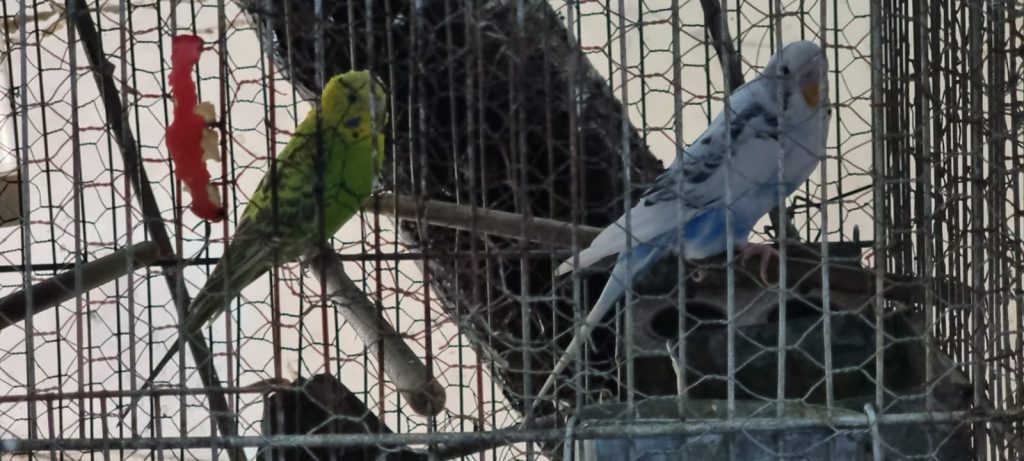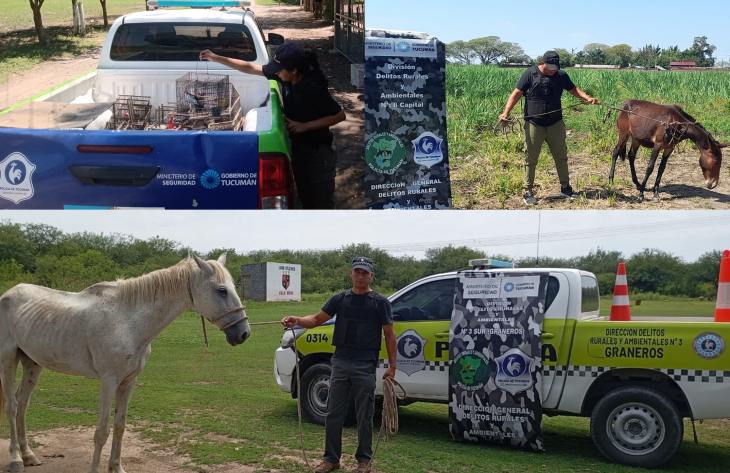In several operations carried out on Tucumán’s roads in recent days, authorities rescue wild birds and animals from the roads.
Personnel from the General Directorate of Rural and Environmental Crimes detected several infractions to provincial laws that prompted their intervention.
All the specimens detected are in good health and, when applicable, they were released.
Rescue of wild birds in Tucumán
 Bird trafficking is one of the most common crimes related to wildlife.
Bird trafficking is one of the most common crimes related to wildlife.
Due to an infraction of Law 6292 at a house in the town of Colombres, officers from the Capital Division found several caged birds.
During the procedure, 29 wild birds were seized, including species such as: reina mora, cardenal, rey del bosque, jilgueros, pepiteros, paraguayito, corbatita, and cabecita negra. Additionally, they found seven cages and 14 traps used for their capture and captivity.
The Flora and Fauna Directorate of the province ordered the immediate release of the specimens into their natural habitat, as reported by police authorities.
Animals on the roads
On the other hand, according to information provided by Commissioner Félix Bordón, during Saturday morning, this weekend, they detected several specimens.
“While a team from the Division No. 5 Simoca was patrolling the city, upon arriving at a place called Los 3 Bajos, the officers observed a bay-colored horse without a brand wandering along a dirt road,” he recounted.
“Without the care of anyone, so, taking the necessary precautions, the personnel lassoed the animal,” Bordón specified.
Meanwhile, around 11:00, Sub-Commissioner Edith Páez from Division No. 6 Capital, also reported the seizure of a zaino-colored mule without a hot brand, found in Barrio Santa Rita in the town of Colombres.
They removed the animal from the road to prevent a possible collision with vehicles circulating in the area.
Likewise, from the Rural and Environmental Crimes Division No. 3 in Graneros, they reported that while carrying out prevention patrols, upon reaching the area of Campo Bello, they observed a moro-colored horse walking aimlessly along the edges of route 308, without the care of anyone.
Therefore, specialized personnel from that Special Unit lassoed the animal for its protection.
 Rescues in Tucumán. (Photo: Communication).
Rescues in Tucumán. (Photo: Communication).
The importance of rescuing wild fauna
Worldwide, wildlife trafficking is the fourth most lucrative illicit business and the second leading cause of biodiversity loss.
None of the Argentine provinces are exempt from this concerning reality, which is not only illegal but also a threat to these animals and to people, as many specimens can be disease vectors.
In this regard, for example, Mendoza has worked on more than 5,000 operations involving wildlife, rescuing over 16,000 animals from illegal trafficking in the last 10 years.
As highlighted by authorities, 75% of the rescued animals are birds, and 24% are mammals.
The rescued animals often show signs of abuse, such as injuries on their heads and beaks from attempting to escape cages, muscle atrophy, and leg injuries due to inadequate flooring.
These animals can also carry zoonotic diseases, putting at risk the people who acquire them.
Have you already visited our YouTube channel? Subscribe now!

